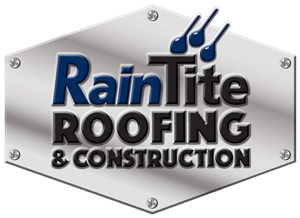When it comes to your home’s roof, making informed decisions is critical to protecting your investment and ensuring the safety and comfort of your family. Unfortunately, misconceptions about roofing materials, maintenance, and repairs persist, leading homeowners to make less-than-ideal choices. In this comprehensive guide, we will debunk common roofing myths and provide accurate information to empower Rapid City homeowners in their decision-making.
With so many myths and misconceptions, navigating the world of roofing can be overwhelming. Our goal is to arm you with accurate, expert advice, enabling you to make educated choices that maximize the performance and lifespan of your roof.
By exploring the facts behind prevalent myths, you will be empowered to make better decisions regarding maintenance, repairs, and upgrades to your home’s roofing system, and ultimately protect your home and family.
The Myth of the “Lifetime” Roof: Lifespan and Maintenance Matters
When selecting roofing materials, some homeowners might be tempted by the promise of a “lifetime” roof. In truth, while certain issues can be minimized through the use of high-quality materials, all roofs demand maintenance and will eventually need to be replaced. Consider these factors when evaluating roofing materials:
1. Lifespan: It’s important to recognize that even the most durable materials have a limited lifespan. Concrete tiles, metal roofing, and high-quality asphalt shingles can last between 40-70 years, depending on factors such as climate, maintenance, and installation quality.
2. Maintenance: Regardless of materials, proper maintenance is necessary to maximize your roof’s lifespan and performance. Schedule regular inspections, clean gutters and downspouts, and promptly address damages to prevent more significant issues.
DIY Roofing Repairs: Benefits, Drawbacks, and the Value of Professional Expertise
While some minor DIY repairs might appear cost-effective at first glance, tackling roofing projects without the proper training or experience can lead to more significant issues and costs in the long run. Consider these potential drawbacks of DIY repairs:
1. Safety concerns: Inadequate safety measures and lack of experience can lead to injuries and other accidents during DIY repairs.
2. Further damage: Incorrectly implementing repairs can exacerbate existing issues or cause additional structural damage to your roof.
3. Short-term savings, long-term costs: Compromised repairs may necessitate costly, professional intervention or, worse, a complete roof replacement.
To ensure your roof’s longevity and safety, it is best to partner with experienced professionals for repair work.
Ventilation: The Essential Role of Proper Attic Ventilation in Roof Performance
Proper attic ventilation plays a critical role in maintaining your roof’s efficiency and lifespan. Dispel these misconceptions surrounding ventilation:
1. Ventilation is only necessary in warm climates: While ventilation is imperative for reducing cooling costs in warm climates, it also serves to reduce condensation and ice damming in colder temperatures.
2. More attic vents mean better ventilation: The key to effective ventilation lies in proper balance and positioning, not the sheer quantity, of intake and exhaust vents.
Investing in an expertly designed and installed attic ventilation system can help prevent moisture damage, prolong the life of roofing materials, and increase overall energy efficiency.
Layering Shingles: Assessing When a Complete Tear-Off is a Smarter Choice
Homeowners may consider layering new shingles over existing ones to save time and money, but it is crucial to understand the potential drawbacks of this approach:
1. Difficulty in detecting underlying damage: Layering shingles can make it challenging to identify and address issues such as moisture damage or structural concerns that necessitate repair before installing new shingles.
2. Increased weight: Multiple layers of shingles can add significant weight to your home’s structure, potentially leading to structural damage.
3. Voided warranty: Manufacturers may void warranties if new shingles are layered over existing ones, leaving you without financial protection in the event of material defects.
In many cases, a complete tear-off and thorough evaluation of the roof deck is the smarter choice for long-term performance and value.
Metal Roofing Myths: Debunking Common Misconceptions
Metal roofing has gained popularity among homeowners for its durability and energy efficiency. However, misconceptions persist, which may dissuade some from choosing metal roofs:
1. Noisy rains: The reality is that metal roofs, when properly installed with insulation and sound barriers, are no louder than other roofing materials during rainfall.
2. Lightning magnet: While metal is a conductor, metal roofs do not increase the likelihood of a lightning strike. If anything, a metal roof can safely disperse electricity throughout the structure in the event of a strike.
3. Poor insulation and energy efficiency: Contrary to popular belief, metal roofing can be incredibly energy efficient due to its reflective properties, keeping your home cooler in summer and warmer in winter.
Arming yourself with the facts about metal roofing can help in making the best decision for your home.
Conclusion:
As a homeowner, knowledge is power when it comes to making informed decisions about your roof. By understanding and debunking common myths surrounding materials, maintenance, repairs, and more, you can more accurately assess your roofing needs and protect your home for years to come.
Trust RainTite Roofing & Construction to provide accurate, reliable advice and solutions for your roofing concerns. Click here to schedule a free, no-obligation consultation with our expert local roofing company in Rapid City today, and let us put our expertise to work for you in maintaining, repairing, or upgrading your roof.

